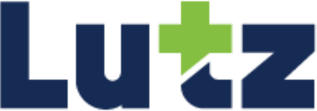
HOW TO DESIGN A DIFFERENTIATING BENEFITS PACKAGE
Over the past couple of years, the so-called “Great Resignation” has led to an unprecedented number of career changes. At the same time, the boom in remote and gig work means that skilled employees have more choices than ever. For that reason, recruiting and retaining talent in today’s climate can be challenging. Offering the right blend of benefits for your target talent pool can give your company a competitive edge. While there’s no single ideal benefits package, there are tactics you can use to find the one that’s best for your organization.
Tailor Your Approach
By looking at economic trends affecting your workforce demographic, you can design a package customized to the wants and needs of those individuals. If you’re in an industry with predominantly young workers, for example, include benefits that address their specific concerns, such as allowing participants to receive matching 401(k) contributions for student debt repayments. And if many of your employees are parents of younger children, consider offering life insurance and ensure health benefits are affordable for working families. Thinking proactively and prescriptively about what current and prospective employees may need will help you tack toward your ideal benefits package.
Cover Multiple Bases
Optimal packages are typically holistic, well-rounded and able to help the greatest percentage of employees through multiple avenues. A flexible work schedule can be of value to employees with and without children — as well as older members of your workforce — all for different reasons. If established employees reap greater benefits from their 401(k)s while younger workers sit on the sidelines due to crippling student loans, consider a loan assistance program. Ensure your benefits package is balanced, while giving employees a leg up with financial, physical, social and emotional wellness. One study suggests happy employees are 12% more productive at work. By leveraging employee benefits as a tool to promote overall wellness, you can help both your staff — and your company — prosper.
Know Your Team
Ultimately, one of the best ways to find out how your benefits stack up is to talk to your employees. Ask what their greatest concerns are; they may surprise you. For instance, you may find that workers are underutilizing health benefits because the deductibles are out of reach for them. You may also find some employees are opting out of their 401(k) because of debt obligations. These concerns might be mitigated with an FSA, HSA, profit sharing or loan payoff assistance program.
Once you know what’s keeping them up at night, you can better determine which benefits are working and which ones might need tweaking or a complete overhaul. And this can enable you to design a package that means the difference between a candidate accepting your job offer and a competitor’s — as well as how soon you might need to replace them. Moreover, you’ll show that you’re actively engaged with your workforce and understand employees’ needs, which helps foster an environment where workers can thrive both personally and professionally.
FINANCIAL STRESS IN THE WORKPLACE
As the global economy continues to gyrate on an uncertain path, many are feeling increased stress regarding their finances. As of March, for example, total U.S. household debt was up more than 8% year over year, according to a study by NerdWallet. And while debt and financial strain are often treated as personal problems, anxiety about not being able to pay bills or save money can have a ripple effect in the workplace. Consequently, workers struggling financially — and even their team members — may be affected. Here are some ways employee financial stress can negatively impact organizations.
Diminished Productivity
When employees are stressed, it can be more difficult to concentrate on the job. And because finances are such a widespread and significant stressor, money worries are a common reason worker productivity suffers. Studies show that well-compensated employees tend to be happier at their jobs and also derive greater meaning from what they do — possibly due to a buffering effect of higher wages on financial anxiety. But compromised productivity due to financial stress can be exacerbated by rising inflation that makes it harder for earnings to keep pace with higher costs across the board.
Increased Health Care Costs
Stress doesn’t just make people feel emotionally run down — it can also take a measurable toll on physical health. Chronic stress can lead to decreased immune function and longer recovery times. High, sustained levels of stress can raise the risk of a heart attack or other serious illnesses. Stressed employees may be more likely to need sick leave and are at greater risk of developing chronic conditions that may require long-term, costly medical interventions.
Contagion to Teams
People experiencing prolonged or excessive stress can withdraw, display anger or irritability, shut down, and become less effective at expressing their needs or ideas. This means that while one employee could be having a private struggle to stay afloat, the performance of entire teams can suffer — particularly if a team leader is experiencing financial anxiety. Projects can lag or stall out, critical deadlines could be missed and important objectives may be miscommunicated. Ultimately, the effects of financial stress can indirectly spread through entire departments, diminishing morale throughout an organization.
Manage Financial Stress Proactively
To help ensure financial stressors don’t get out of hand, it’s important for organizations to take prompt and concrete steps to address them. Encourage employees to seek out their advisor for one-on-one meetings or take part in group sessions. Holistic financial wellness programming can help workers more effectively manage stress and mitigate factors that cause or exacerbate it. Plan sponsors should facilitate communication between employees struggling with financial anxiety and people in a position to assist them such as a financial advisor, EAP counselor or their supervisor. With a multipronged approach and the proper support, organizations can enjoy a healthier workforce — and bottom line.
Sources:
https://www.nerdwallet.com/blog/average-credit-card-debt-household
https://www.cnbc.com/2019/07/16/perhaps-money-can-buy-you-happiness-at-least-at-work.html#:~:text=The%20latest%20CNBC%2FSurveyMonkey%20Workplace,those%20in%20lower%20income%20brackers
https://www.healthline.com/health/stress/effects-on-body
https://behavioralhealthsystems.com/the-relationship-between-stress-and-communication/#:~:text=Communication%20Stress%20can%20easily%20manifest,the%20correct%20words%20or%20tone
WHO IS THE "ZILLENNIAL" WORKFORCE AND WHAT DO THEY WANT?
“Zillennials” are people who were born between 1993 and 1998. According to a recent Met Life survey (“The Rise of the Whole Employee: 20 Years of Change in Employer-Employee Dynamics.”) they are expecting a more holistic benefits package from their employers.
The main take-away from this survey is that Zillennials are seeking significantly more holistic employee benefits packages from their employers, Example: nearly 30% of Zillennials have considered leaving their employer for a more robust benefits package over the past year (compared to 19% of all employees).
According to Todd Katz, executive vice president, Group Benefits at MetLife, “When it comes to improving job satisfaction, loyalty, and retention, employers need to think of benefits as the foundation of the whole employee experience. Employers should be offering comprehensive packages that both complement and reinforce the other critical elements of the employee experience. If they don’t, they risk losing this vital sector of the workforce to an employer who will.”
While health insurance and retirement savings remain important, the study states that. “…that perspective has evolved significantly during the last 20 years. Financial wellness now entails having access to financial planning and emergency savings, in addition to a retirement plan.”
Many Zillennials, and other younger workers, are increasingly interested in student loan debt assistance, with 50% saying the benefit is a “must have,” according to the report.
Interestingly, the study also showed that 41% of Zillennials feel their employer is doing the ‘minimum possible’ to help them adjust to their new working environment, and that Zillennials want a work culture that incorporates employees’ social and mental health with an emphasis on recognizing the importance of workers’ lives beyond work and policies that limit working hours.
The report cited workers who are satisfied with a more holistic benefits package are more likely to plan to stay with their employer for 12 months (84%), versus employees who are unsatisfied with employer-provided flexibility (47%).
Some examples offered of benefits that would most improve Zillennials well-being said include paid and unpaid leave benefits (74%); work-life management programs (67%); mental wellness benefits, including employee assistance programs and reimbursement for therapy sessions (62%); and programs to support their financial needs (55%) were top priorities, the study found.
The survey concludes that “It’s clear we’ve reached a critical inflection point in the workplace, and employers across industries should not only be taking note but should also see this as an important opportunity for reflection and growth,”
It is clear that Zillennials are evaluating their work experience in a new and expanding way. It is important to understand this dynamic as employers consider hiring practices and potential redesign of their employee benefit package.
Sources:
The MetLife U.S. Employee Benefit Trends Study included 2,737 interviews with benefits decision makers and influencers at companies with at least two employees and the core employee survey consisted of 3,041 interviews with full-time employees, ages 21 and over, at companies with at least two employees. https://www.metlife.com/employee-benefit-trends/2022-employee-benefit-trends/
RETIREMENT READINESS: HOW WILL YOU PREPARE?
Much has been made of the current state of the American worker as it pertains to their retirement savings. According to a recent study by the General Accountability Office, 29% of Americans 55 and older do not have any retirement savings or pension plan and those who have saved are woefully behind with 55-64 years old averaging $104,000 in retirement assets.1
The bleak outlook can largely be attributed to a lack of education when it comes to retirement planning – and more specifically investment allocation. With a growing number of millennials feeling ill equipped to make investment related decisions – even within their own retirement plans, the numbers prove that ignorance is not bliss. 41% of millennials say they are not currently investing in any financial products, and among them, 48% believe they don’t have enough money to invest.2
These numbers alone should serve as a call to action for younger workers who are increasingly finding themselves behind the eight ball when it comes to saving for retirement. A sound, long term, roadmap to retirement can be centered on three key areas.
Develop healthy financial habits.
In a society that has become increasingly driven by social media it is very easy to fall prey to a “keeping up with the Jones1” philosophy toward spending. Do you have “friends” that tweet and share every purchase and activity in their lives? Believe it or not, this subconsciously drives the temptation to spend on things we do not need or want, to impress people we don’t even like! Finding a balance and delaying gratification on purchases can single handedly make or break your financial wellbeing and it starts with making tough budgeting decisions. people in a position to assist them such as a financial advisor, EAP counselor or their supervisor. With a multipronged approach and the proper support, organizations can enjoy a healthier workforce — and bottom line.
Live below your means.
Try contributing an extra one or two percent to your company’s retirement plan or open up an IRA. You won’t miss the contribution and your standard of living will adjust accordingly. Seek to live below your means today to ensure a strong financial future tomorrow.
Reduce your debt.
The average American household carries $5,823 in credit card debt. According to a study, the average household is paying a total of $1,029 in interest per year – translating to lost dollars that could be pumped into retirement savings and wealth accumulation. In some situations, debt, such as a mortgage or a student loan, can improve one’s financial position long term – however, credit card debt in particular carries the highest interest rates and should be paid off as quickly as possible. Try working with an independent financial planner if necessary to consolidate debt and come up with a game plan to attack it head on.
At the end of the day there’s no magic bullet that can singlehandedly solve the retirement shortfall for millions of Americans. Only you can take steps to educate yourself and make prudent, financially savvy choices in your day-to-day life which will translate in a significantly healthier financial standing. Don’t just hope that the retirement picture in your life becomes clearer as the day gets closer, because the opposite is true. Take measured steps to build confident savings and investment solutions for your household by starting today!
1 https://www.gao.gov/assets/gao-19-442r.pdf
2 https://www.businessinsider.com/millennials-waiting-to-invest-until-they-earn-more-mistake-2020-9
3 https://www.nerdwallet.com/blog/average-credit-card-debt-household/
IMPORTANT DISCLOSURE INFORMATION

Recent News & Insights
Update: Tax Highlights of “The One, Big, Beautiful Bill”
From Seed to Scale: Tax & Operational Strategies for AgTech Startups
Case Study: A Smarter 401(k) Strategy for a Busy Doctor's Office
Recruiting medical talent? Know the Tax Implications of Modern Compensation Packages



.jpg?width=300&height=175&name=Mega%20Menu%20Image%20(1).jpg)
%20(1).jpg?width=300&height=175&name=Mega%20Menu%20Image%20(2)%20(1).jpg)
%20(1)-Mar-08-2024-09-27-14-7268-PM.jpg?width=300&height=175&name=Untitled%20design%20(6)%20(1)-Mar-08-2024-09-27-14-7268-PM.jpg)

%20(1)-Mar-08-2024-09-11-30-0067-PM.jpg?width=300&height=175&name=Untitled%20design%20(3)%20(1)-Mar-08-2024-09-11-30-0067-PM.jpg)
%20(1).jpg?width=300&height=175&name=Mega%20Menu%20Image%20(3)%20(1).jpg)
%20(1).jpg?width=300&height=175&name=Mega%20Menu%20Image%20(4)%20(1).jpg)
%20(1).jpg?width=300&height=175&name=Mega%20Menu%20Image%20(5)%20(1).jpg)
-Mar-08-2024-08-50-35-9527-PM.png?width=300&height=175&name=Untitled%20design%20(1)-Mar-08-2024-08-50-35-9527-PM.png)


.jpg)




